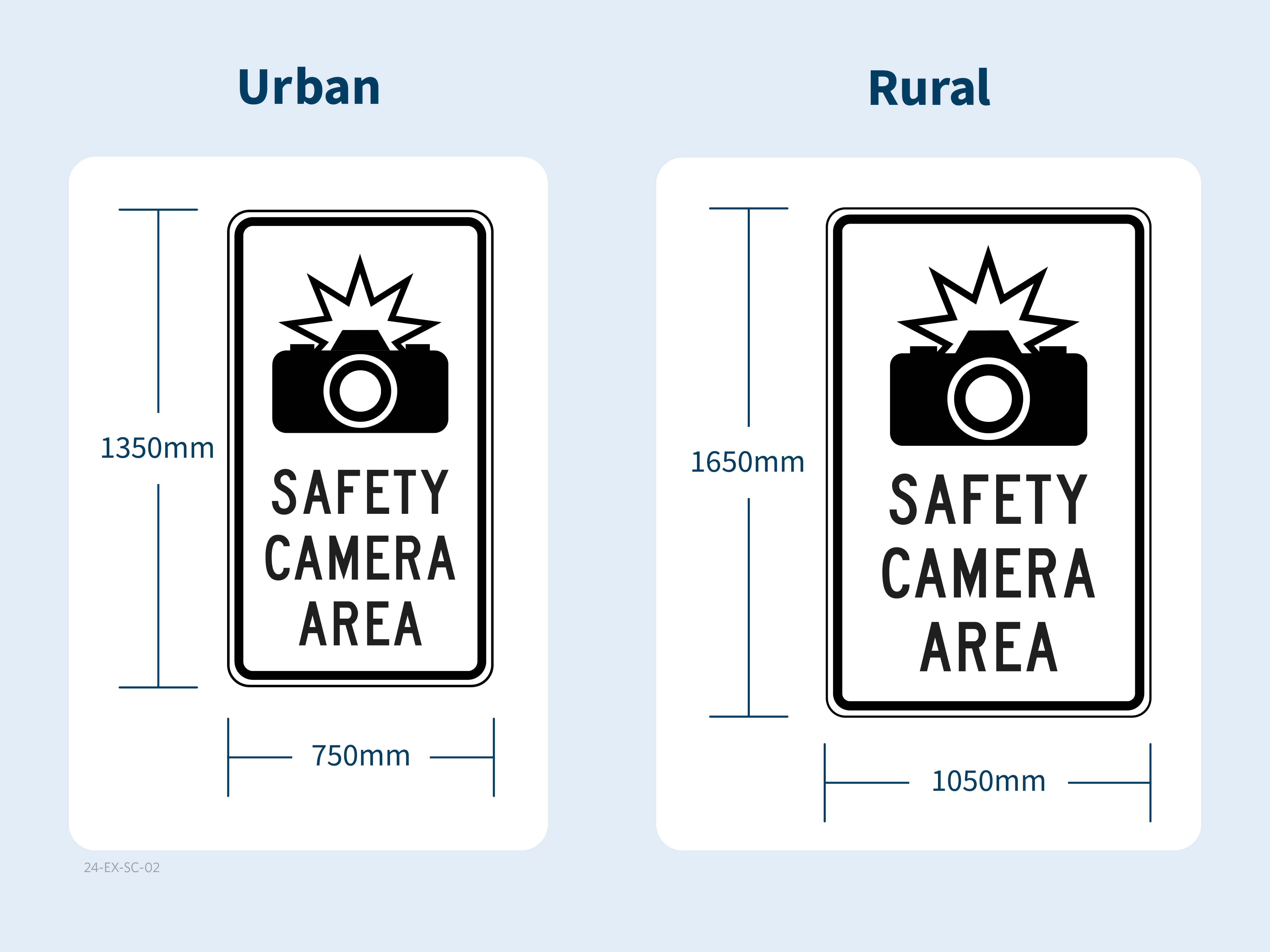We put fixed safety cameras on high-risk stretches of road and we’re installing signs so you know there is a fixed safety camera nearby. We want people to see our signs, slow down if needed, and respect red lights.
We’ll put signs up at a new fixed camera sites before we switch them on.
Mobile safety cameras will remain unsigned.
Where fixed safety cameras are now
Research shows a mix of signposted and unsigned safety cameras of various types generates greater road safety benefits than either one alone. We'll signpost our fixed safety cameras and keep mobile safety cameras unsigned. Signs are a reminder to check your speed, slow down if needed, and to respect red lights.
When we make new signs for streets and roads, we have to follow the specifications in the Land Transport Rule: Traffic Control Devices 2004. Rules for signs in rural and urban settings are different.
Words on signs need to be bold so the driver can read and respond to the message. Each word on a safety camera area sign appears on its own line to limit the width of the sign and to make sure it fits on the roadside.
Signs are on poles and raised 2.5m off the ground.

Graphic showing the dimensions of an urban safety camera area sign and a rural safety camera sign.
We follow best practice advice from engineers and safety experts about where to place signs.
In an urban area, drivers need to have a clear line of sight to the sign for at least 60m. In a rural area, the distance is 120m. Engineers consider other factors like the distance of the sign to the camera site, if people will have time to read and respond to the message before entering the detection area, where other signs are located, and making sure people using their driveways will have a clear view.
To put a sign up, contractors work on the roadside and lay concrete foundations for the pole. Each sign needs 1 or 2 poles, and temporary traffic management.